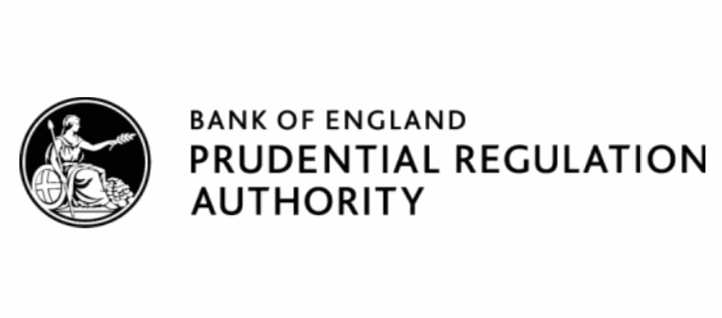Climate risks could drag on re/insurers annual profits by 10-15%: UK PRA’s Woods

Having now published the results of its Climate Biennial Exploratory Scenario (CBES), looking at the financial risks posed by climate change for the largest banks and insurers operating in the UK, the Bank of England believes that over-time climate risks could become a persistent drag on earnings.
While projections of climate losses are uncertain, notable data gaps exist, the analysis and modelling is still in its infancy and UK banks and insurers have much more to do to understand their exposure to climate risks, the results suggest that, without action, climate risk will significantly drag down profits and ultimately the economy if unchecked.
“At an aggregate level UK banks and insurers are likely to be able to absorb the costs of transition that fall on them,” the Bank of England explained.
“The overall costs will be lowest with early and well-managed action to reduce greenhouse gas emissions and so limit climate change,” the Bank continued, but added that, “Some costs that initially fall on banks and insurers will ultimately be passed on to their customers.”
Climate policy will be a key determinant of how impactful climate risks are on the insurance and reinsurance sector, the Bank of England believes.
Noting that, “Banks and insurers have a collective interest in managing climate related financial risks in a way that supports that transition over time.”
Sam Woods, Deputy Governor for Prudential Regulation and Chief Executive Officer of the Prudential Regulation Authority, commented, “Recent events such as the war in Ukraine and rises in energy prices illustrate the challenges banks and insurers can face from changes in their operating environment. Today’s exercise explores how well they are equipped to manage the longer-term challenges from climate change, in the context of our financial stability objective.
“We find that they are likely to be able to absorb the climate costs which fall on them without material risks to solvency, but will face significant headwinds and therefore need to continue to invest in their ability to support the economy’s transition to net zero.”
But in a speech this morning, PRA CEO Woods gave some more clarity into how large the impacts of climate risks could be for the UK’s insurance and reinsurance sector, saying that, “The first key lesson from this exercise is that over time climate risks will become a persistent drag on banks’ and insurers’ profitability – particularly if they don’t manage them effectively.
“While they vary across firms and scenarios, overall loss rates are equivalent to an average drag on annual profits of around 10-15%.”
That’s significant and a 15% drag on profits from climate risks, which might also imply that higher attrition would also be felt through elevated severe weather and catastrophe losses outside of the climate scenarios, could be enough to make some insurance or reinsurance firms much less profitable, or even unprofitable.
In addition, Woods admitted that, “The limits of the exercise mean the actual impact could well be larger due to some significant exclusions.”
However and encouragingly, Woods also said that, “Based on this exercise the costs of a transition to net zero look absorbable for banks and insurers, without a worrying direct impact on their solvency. By themselves, these are not the kinds of losses that would make me question the stability of the system, and they suggest that the financial sector has the capacity to support the economy through the transition.”
Also cautioning that, “Any positive message needs to be taken with a major pinch of salt: both because there is a lot of uncertainty in these projections and because this drag on profitability will leave the sector more vulnerable to other, future shocks. A world with climate change is a riskier one for the financial system to navigate.”
Woods also warned that as the climate scenarios became more severe, with less climate action, the impacts on insurance consumers will be far greater, due to rising levels of risk and losses from climate-related effects.
“The ‘no action’ scenario is particularly unpleasant for life and general insurers – even sticking to the 30 year window, their losses in this scenario were worse than in the transition. For instance UK and international general insurers, respectively, projected a rise in average annualised losses of around 50% and 70% by the end of the NAA scenario. It’s worth emphasising that these costs would be mostly passed on to consumers through higher premiums,” Woods said.
Adding, “Ultimately, in a ‘no action’ scenario, we would see a reduction in access to lending and insurance for so-called ‘climate vulnerable’ sectors and households. To give an example of what this means, homes at risk of flooding would likely become prohibitively expensive to insure or borrow against. Like so many of the impacts of climate change, this cost would be borne unequally: 45% of the mortgage impairments in the scenario are accounted for by just 10% of the country. And there is evidence that in areas particularly at risk of flooding, many homes could become uninsurable.”
Overall, the scenario exercise and its results show, “That climate risk is a first-order strategic issue for the firms we regulate,” Woods said. “But in my view it is not yet clear that the magnitude of transition costs require a fundamental recalibration of capital requirements for the system.”
“A persistent drag on profitability would be very nasty for firms, but so long as they are able to continue to make sufficient profits to maintain their capital buffers, its impact on safety and soundness might be less material. Had the results of this exercise suggested a fundamental threat to the solvency of these firms, our response would of course have been quite different,” he continued.
Looking at capital adequacy, not just in aggregate or isolation, but identifying where the gaps in capital may appear in the banking and insurance or reinsurance sector, will be key, Woods noted, as “some of these risks are highly concentrated in particular sectors.”
As the insurance and reinsurance market undergoes its transition and climate risks evolve, the need for access to risk capital and also functional risk markets, where risk can be transferred and traded more strategically, may increase.
As too might the need for access to newer forms of capital and efficient risk transfer structures, while we still believe the development of a new generation of climate risk transfer focused products and hedges could be an opportunity, to deliver products that are effective climate risk solutions, while offering attractive returns to investors and capital partners.
There is going to be a wave of demand for new climate risk transfer and hedging solutions, which, powered by the data delivered through regulated disclosure, are likely to be designed to be increasingly responsive and sensitive to their users needs.







